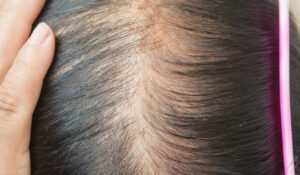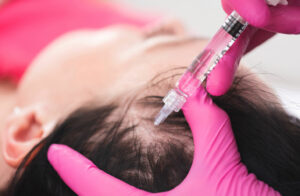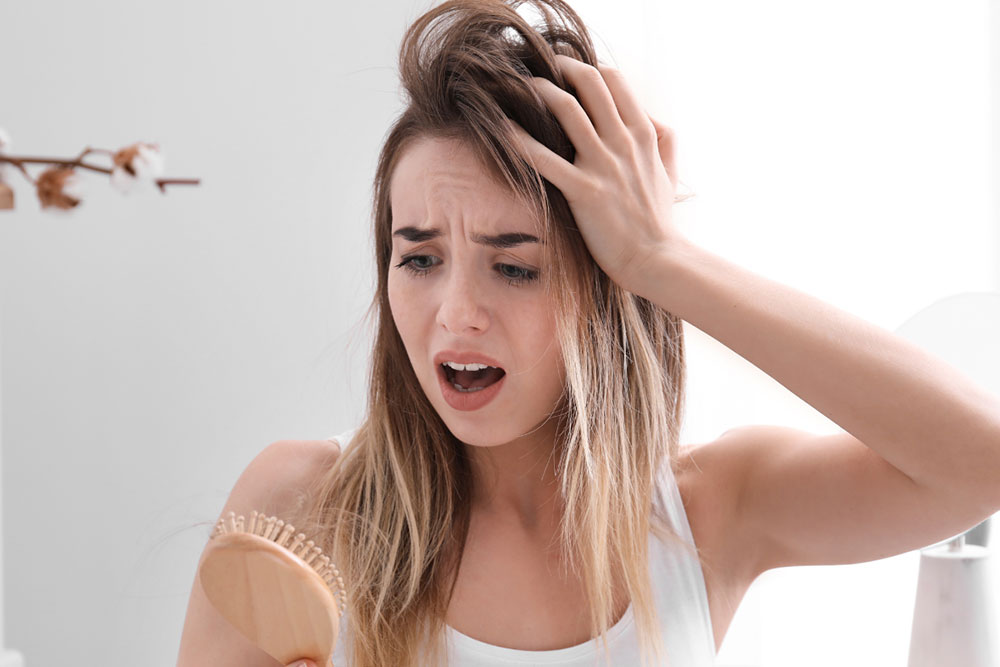Hair loss and hair thinning affect both men and women at some point in their lives. Common reasons that can cause your hair to thin and fall off eventually include stress, poor diet, underlying medical conditions, hormonal imbalance, and the use of certain medications.
According to The American Academy of Dermatology (AAD), losing 50 to 100 hairs daily is normal but hair fall beyond this limit could be an indication of hair loss.
So, if you’re looking for a hair restoration treatment that is effective, yet doesn’t involve the risks of a surgical procedure, PRP might just be up your alley.
Read on to learn more.
Causes Of Hair Loss
 Hair loss occurs when the amount of hair naturally falling off your head exceeds the amount of new hair growth.
Hair loss occurs when the amount of hair naturally falling off your head exceeds the amount of new hair growth.
Hair loss can be temporary or permanent depending on the cause, for example:
- Poor diet, pregnancy, and stress can cause temporary hair loss.
- On the other hand, genetics can cause permanent hair loss.
In men, hair loss typically starts as small bald patches leading to complete baldness. Conversely, in women, hair thinning starts at the top or crown of the head, but doesn’t usually lead to baldness.
PRP Therapy For Hair Loss
PRP for hair loss is a revolutionary hair restoration treatment in which platelet enriched plasma (PRP serum) is derived from the patient’s own blood and then injected into the scalp to reduce hair loss and hair thinning.
Unlike surgical hair transplants, PRP for hair loss is a minimally invasive procedure that requires no downtime at all. The procedure is safe, effective, and quick (i.e., the entire treatment can be completed in less than an hour).
According to research, PRP can be an effective treatment for stress or age-related hair loss, as well as alopecia areata, a disorder that causes hair thinning in young people who are otherwise healthy.
The effectiveness of PRP therapy relies on platelet count, the severity of hair loss, and how recently it began.
How Does PRP Therapy Work?
The procedure is completed in two steps (i.e., extraction of PRP serum and injecting it back into the scalp).
First, a sample of your blood is drawn and is put through a centrifuge to extract platelets and plasma and to separate other cells from it. Platelets are rich in growth factors, and cell-signaling proteins that can trigger a natural healing response in your body.
 Next, the extracted PRP is then injected back into the scalp to:
Next, the extracted PRP is then injected back into the scalp to:
- Repair and heal damaged hair follicles by enhancing their blood flow
- Nourish your scalp to reduce hair thinning
- Inhibit or delay hair loss
- Lengthen the growth phase of existing hair
The primary goal of PRP treatment for hair loss is to delay or stop its course. However, some patients reported minor hair regrowth as well.
PRP for hair loss is an effective one-stop hair restoration treatment that can help reduce your hair loss without the risk of side effects. Since the PRP serum and growth factors are extracted from your own blood, the risk of allergic reaction or rejection is next to none.
It is important to remember that getting optimal results without involving the risk of side effects depends largely on a highly skilled and qualified provider. Therefore, At The Couture Surgeon, Englewood, NJ, we perform every procedure with utmost care and consideration so that you can rest assured that you’re getting the best hair restoration experience.
Book a consultation now and start getting your confidence back


